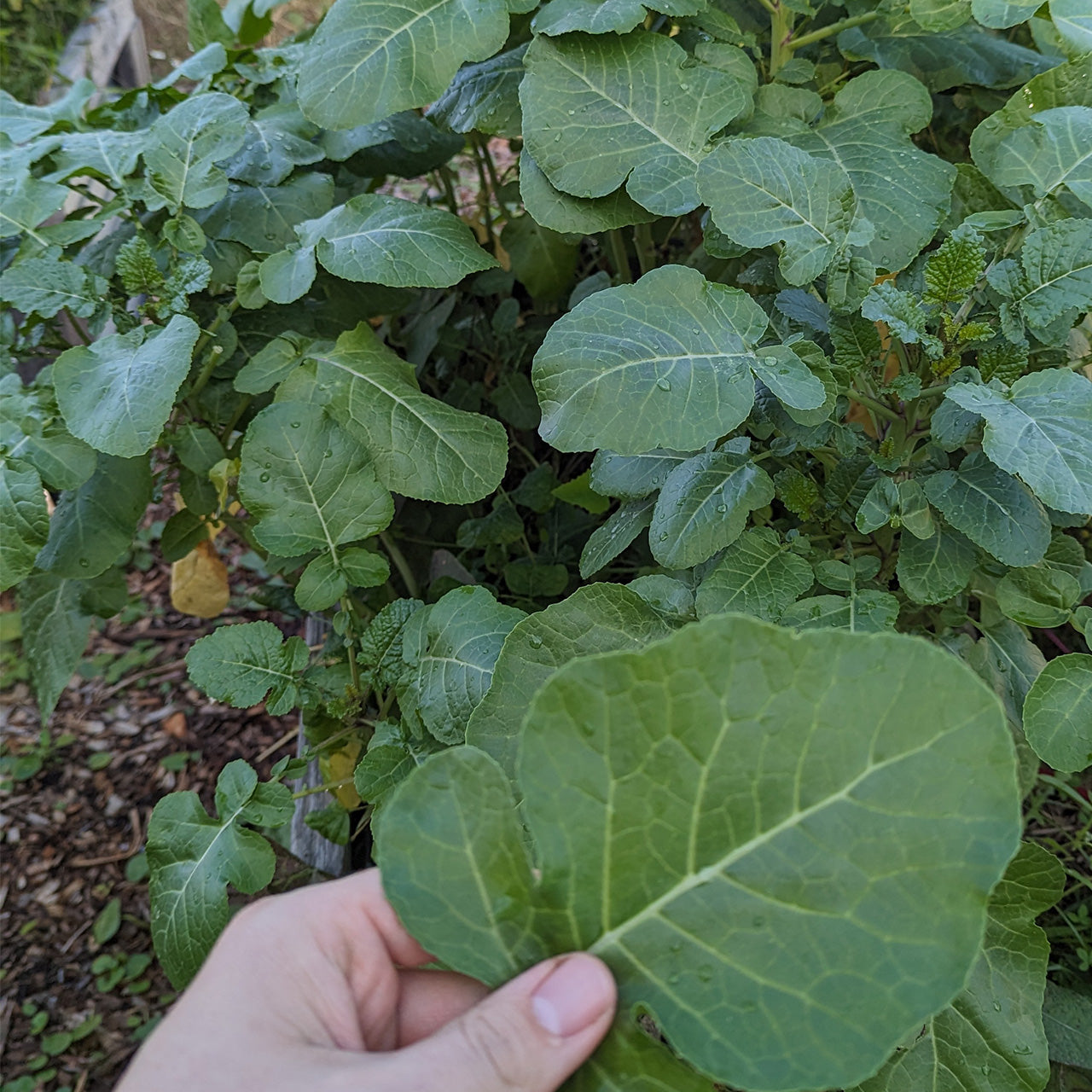Fl Gardening
Ethiopian Kale - Brassica carinata
Ethiopian Kale - Brassica carinata
Couldn't load pickup availability
Ethiopian Kale- Brassica carinata
The Easiest Leafy Green We Have Grown In Florida
Move aside, kale – Ethiopian Kale is stealing the spotlight! This leafy green, also known as Brassica carinata, brings a unique twist to the table.
Imagine kale's mildness combined with mustard's zest, creating a flavor that's truly distinct. But Ethiopian Kale isn't just about taste. It also attracts honey bees with its lovely flowers and holds potential as a bio-fuel source from its seeds.
And here's the kicker – these plants are tough. They can handle warm Florida weather like a champ.
In fact, Ethiopian kale isn't actually a kale. It's more like a cousin of kale. It's actually a mustard but for some reason we call it Ethiopian Kale.
You might also find people calling this plant: Abyssinian cabbage, Abyssinian mustard, or African cabbage.
Whether you prefer delicate baby greens or hearty full-size leaves, Ethiopian Kale has you covered. Just blanch or stir-fry for extra tenderness and flavor.
Best part? You don't need a sprawling garden. Ethiopian Kale thrives in containers or raised beds, making it accessible to all. So why not let it add a dash of flavor and nutrition to your meals?
When to Plant Ethiopian Kale in Florida:
- North Florida: September - May
- Central Florida: September - March
- South Florida: September- February
While Ethiopian kale will grow in warm weather (tolerant up to 95°F) it still grows best in late fall to early spring. However, at the time of writing this it is the end of April in central Florida and we are still plucking new little young leaves off of our plants although They are a bit more bitter than they used to be,
Planting instructions for Ethiopian Kale in Florida
Ethiopian Kale can be directly sown into the garden or transplanted into the garden. If you are coming to the end of the planting window I would suggest planting transplants instead of seeds directly into the garden.
The seeds only need to be buried about a 1/2 inch into the soil. when covering the seeds, make sure there is no large debris like bark pieces or rocks covering the seeds. They will pop up best with a light and fluffy covering.
You can expect to see seeds germinate in 7 - 14 days.
When choosing a spot for your Ethiopian kale in the garden make sure that the location will get at least 4 hours of direct sunlight. If possible, morning sun and afternoon shade is ideal.
Ensure the seeds stay moist at all times. I would always suggest setting up an automatic drip irrigation system.
Can Ethiopian Kale Grow In Containers?
Ethiopian Kale thrives in containers, but don't skimp on depth – aim for at least 20 inches. Just remember, containers tend to dry out faster due to their larger surface area and less soil volume. Combat this by mulching generously on the soil's surface to retain moisture and prevent overheating.
How To Fertilize Ethiopian Kale
Leafy greens like kale, lettuce, and spinach have a big appetite for nitrogen to fuel their leafy growth. Unlike fruit-bearing or root veggies, they don't need much phosphorus or potassium.
When shopping for fertilizer, keep an eye on the first number in the NPK ratio – that's the nitrogen content. Opt for an organic fertilizer high in nitrogen, such as E.B. Stone Organics Blood Meal, to give your leafy greens the boost they crave.
Companion Planting For Ethiopian Kale
Chamomile, dill, mint, rosemary, and sage are like best buds to Brassicas – they really hit it off! But steer clear of eggplants, peppers, potatoes, or tomatoes when choosing neighbors for your Brassicas. Their acidic soil preferences might stir up trouble for your leafy greens.
Harvesting Kale
You can start harvesting 25 - 30 days after planting. We always harvest from the bottom up. This way you are taking the older leaves off of the plant. But you can certainly take away some (not all) of the younger tender leaves after your plant is a little larger and able to sustain itself.
Product Details
| Planting Season | Early Spring & Late Fall |
| Planting Depth | 1/4" |
| Days to Germination | 7-14 |
| Direct Sow or Transplant? | Both |
| Plant Spacing | 8 - 12" |
| Aprox. Seed Count | 40 |
| Type | Heirloom |
Share






